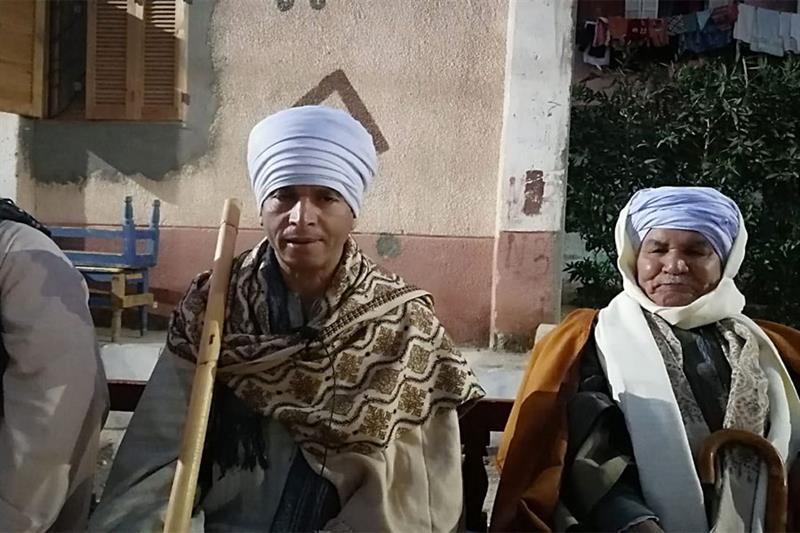Tahteeb: Ancient practice that is still popular in Upper Egypt
Amira Noshokaty , Saturday 1 Jan 2022
On the first day of the national Festival of Tahteeb (Stick Dance), which was held from 23 to 27 December, the masters of Tahteeb sat confidently leaning on their sticks awaiting the game to begin.

Tahteeb is a stick dance/game performed by males, usually involving two people, each holding a stick, and trying to touch specific body parts of each other with the tip of the stick, while moving to rhythm of a drum beat and mizzmar .
Enlisted in 2017 on the list of UNESCO's Representative List of the Intangible Cultural Heritage of Humanity, this form of art dates back to the ancient Egyptians and is vividly drawn on the walls of temples in Upper Egypt. Following the footsteps of their ancestors, Tahteeb is a game/dance still in practice and quite popular in Upper and Lower Egypt.
Saad Al-Rayaan is 60 years old and one of the masters of Tahteeb in the Upper Egyptian governorate of Sohag. Sitting next to his peers and elder masters of Tahteeb, he remembered the first time he ever held a stick and performed Tahteeb.
"The first time I played was with my father at the mulid of Abdel Rahman El-Shebly, I was almost 10 and he got me a stick and taught me the first moves. You see the techniques of the game vary from delta to Upper Egypt; however, this game was first practiced in Sohag, Qena and Luxor, respectively," explained Saad Al-Rayaan to Ahram Online.
Tahteeb's rules revolve upon scoring points by touching specific areas of the body with the tip of the stick. Any violent behaviour means that the player would be expelled and banned from practicing. There are 206 points, called Babat, which amounts to the number of body bones. The game is usually performed on the drum beats and mezzmar rhythms, and is customary played during moulids or wedding festivities. One of the most interesting elements of Tahteeb is the traditional costumes worn by the players and their sticks.
"The stick is usually between 160 and 170 cm, and has to be the player's shoulder high. Nowadays it is made of bamboo, in the old days it was made of real wood and was called Shouma. We would buy it from Upper Egypt. The player must be wearing a Saidi galabia (an Upper Egyptian galabia) to ensure free movement. The emma (head band/turban) varies in the way it is wrapped from one governorate to the other. However, it must be white, with a very few exceptions when the players choose to wrap their shawls instead of the turban. The emma for Upper Egyptians is a sign of manhood, along with the saaidi galabia," he noted.
"As for the rules of Tahteeb, it begins when we say "So". It starts with Al-taskheen (warm up), where players raise the stick and each leg simultaneously, high. This is followed by Al-Salam (greeting) where the two sticks touch each other, then there is Al-Rash, where players moves the stick all around their head, then there is Al- Mosalafa where one moves the stick to the right and left which is followed by Al- Eshtibak (engaged) which involves initiation and defence moves until one of them wins and then the game ends with the word "Has".
Asked about the biggest lesson he learnt from Tahteeb, he smiled and answered: Manners
"It taught me how you respect and honour the elders, for if I am playing with someone older than I am, I never hold high the stick in his face, he has to go first, he has to lead and I follow his movement, even if I were more talented than him. He is the one who hits and I defend," he concluded
-- Sent from my Linux system.
No comments:
Post a Comment